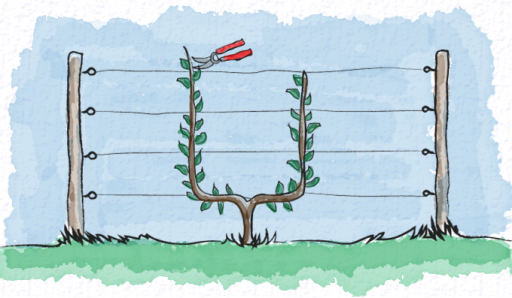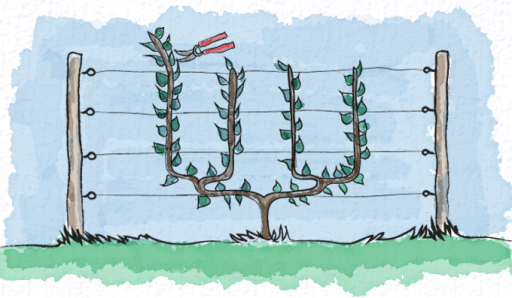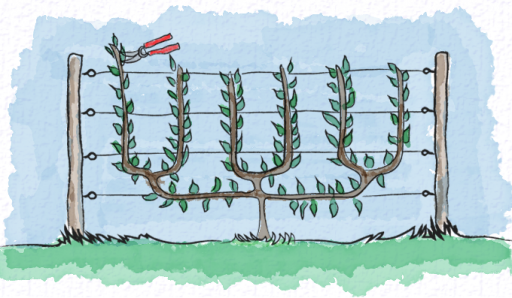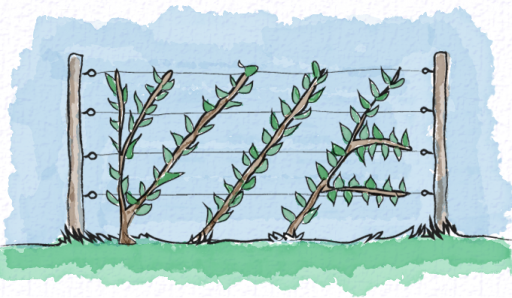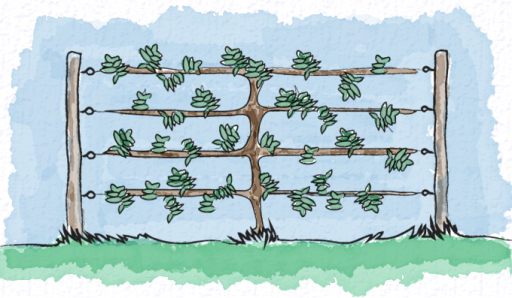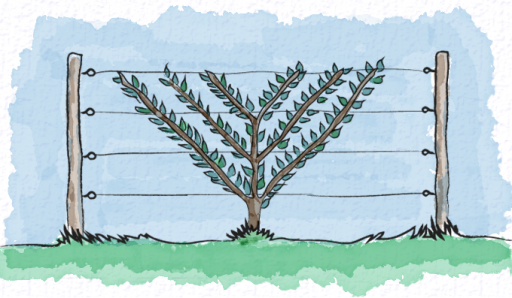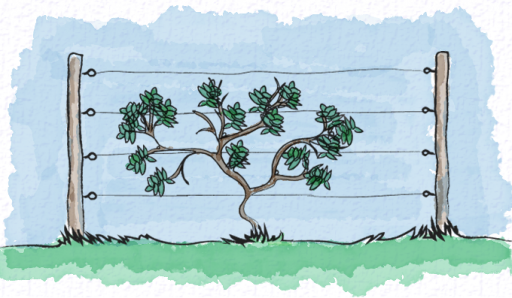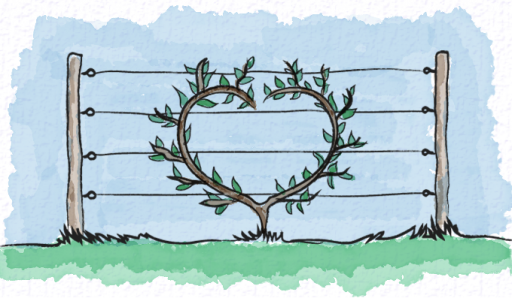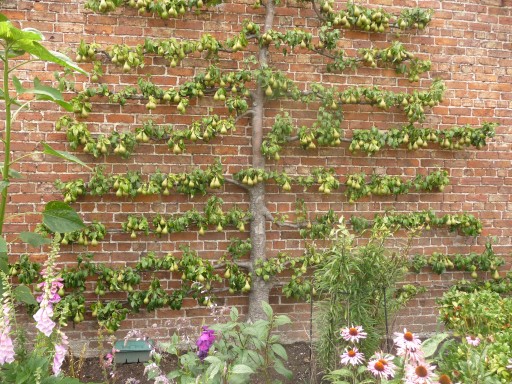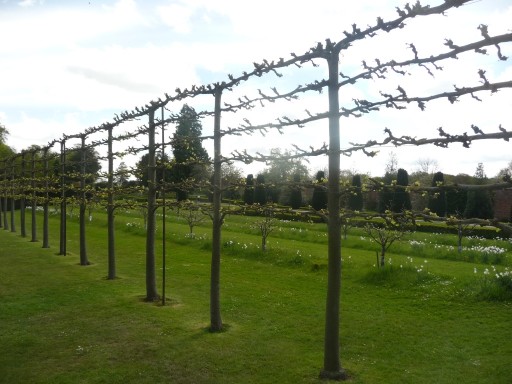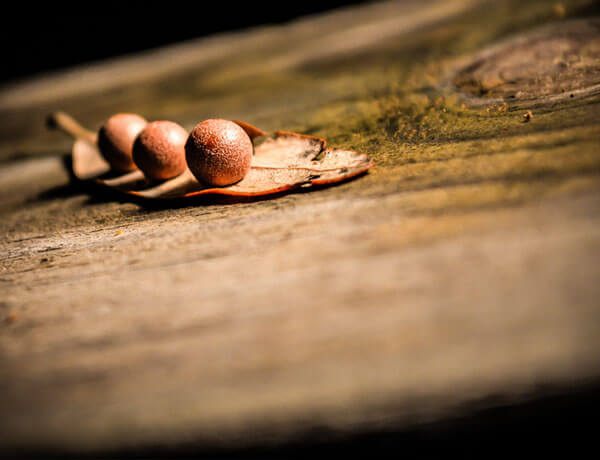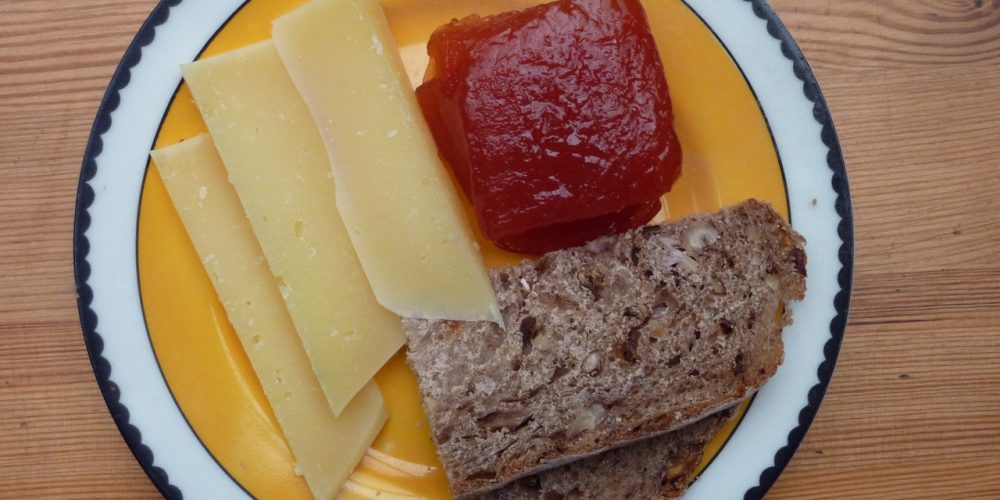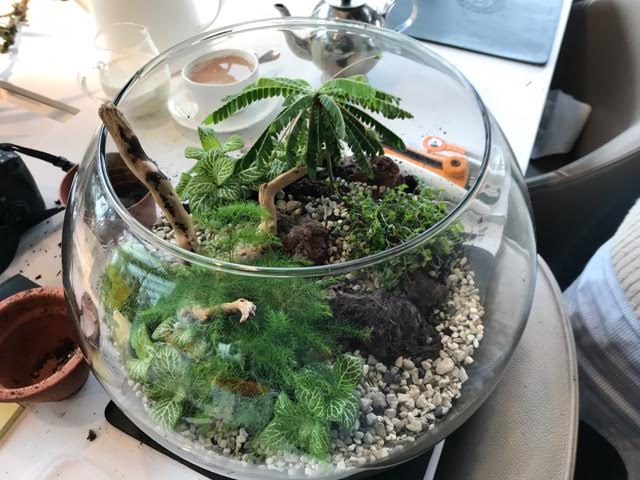-
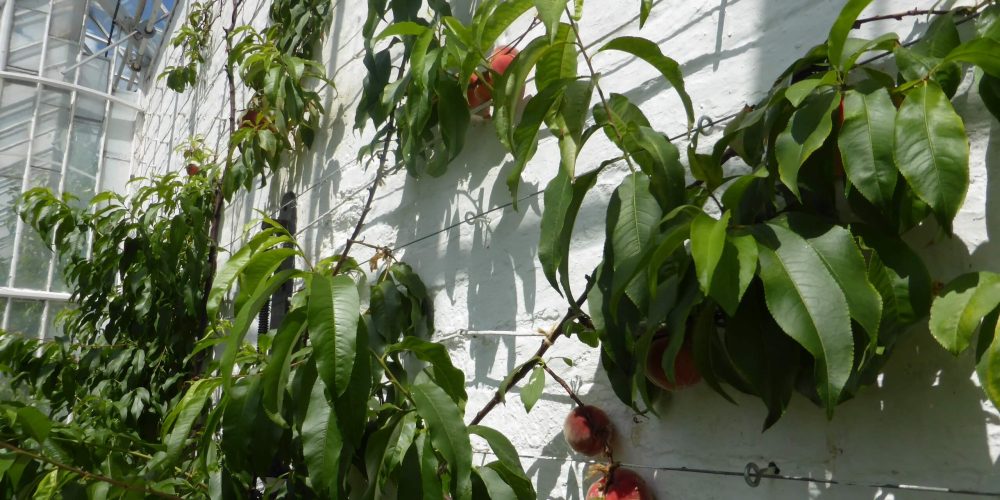
Prune like a pro
The primary function of pruning should be to keep the plant healthy and well balanced. A well pruned plant will retain vigour and in the instance that it produces fruit will reward in kind.
Whilst the operation of pruning knows no bounds there are a number of formal patterns that are proven to lead to increased fruit production. Below we take a look at some of the most popular Espalier patterns. Espalier are trained to grow against a frame or flat wall having only two dimensions – width and height. Apart from the obvious visual attraction there are three good reasons to find a suitable espalier pattern for your plants :
- You can control growth to maximise fruit production.
- Fruit can be forced to be presented for ease of picking.
- They can be faced southward to absorb maximum sunlight. This extends the growing season.
Your choice of pattern should be governed by the type of plant you are choosing to grow in order to maximise productivity and to minimise maintenance. As a general rule fruits that have stones (such as cherries, mirabelles, peaches, plums, nectarines, apricots and quinces) are better trained as fans.
One of the simplest and most effective ways to train a fruit tree is as a U Cordon, sometimes called Candelabra.
Depending on your space, and patience, you can try growing a single U Cordon, a Double U Cordon or even a Triple U Cordon.
U Cordons are well suited to apple and pear trees and you can often buy pre-trained espaliers to give you a head start.
Another simple method is the single stem cordon, often called the Oblique Cordon since the plants are grown at an angle up the wall. By angling the cordon you immediately reduce the vigor of it’s growth.
This method is commonly used for growing a number of different cultivars in a limited space. The trees at the end of the row are usually trained to fill the available space. Another version of this type of Espalier is Drapeau Marchand but in this instance the spurs are encouraged to grow from the uppermost side of the cordon.
Again the very last cordon in the row can sustain branches on both sides of the cordon to take full advantage of the space available.
The Traditional Espalier has a vertical central stem called the trunk which supports pairs of horizontal branches called tiers. With training it’s possible for trees to produce a new tier every year until such a time that you may wish to limit the growth. Limiting growth enables the fruit to be harvested easily. If you’re feeling adventurous you could try braiding your espalier like the below example.
In some patterns such as Belgian Fence and Drapeau Marchand it is beneficial to use canes as a framework to map out the design the plant will take. These can be removed once the pattern is formed.
The Belgian Fence is created by allowing a tree to develop a tier each side of the main trunk at an angle as pictured. After a time the central trunk can be cut back to leave the two tiers. Over time this can be trained to intersect with the tiers of the neighbouring trees to form a fence.
The Arcure Espalier is created by tying the stems into a semi-circular shape. Most side shoots are pinched off with the exception of one shoot at the top of the semi circle which becomes the next tier of growth. This procedure is repeated until it reaches the desired height.
The Palmette Oblique is formed by retaining the central trunk and training the branches at a similar angle to the oblique cordon mentioned above. The angle of the branches is often largely dependant on the space available. However the branches are never taken to horizontal like the traditional espalier. This method of espalier is well suited to fig, peach, gooseberry and nectarine.
Of course you don’t have to be so regimented with your pruning. Espaliers can be trained informally but in such a way to still allow the growth to be controlled and the picking of the fruit simple.
Old romantics may prefer this heart shaped Espalier. As previously mentioned the process of pruning is as broad as your imagination. There’s also the prospect of training your fruit tree into a fan.
Just to prove that this can be done with more than some watercolours here’s a few photo’s of a Pear Espalier at various stages of development.
Perhaps the best time to stand back and admire your hard work is just before harvest when the Espalier is full.
Here’s a series of Espalier that have been planted to form a continuous boundary. This technique is often known as Pleaching.

